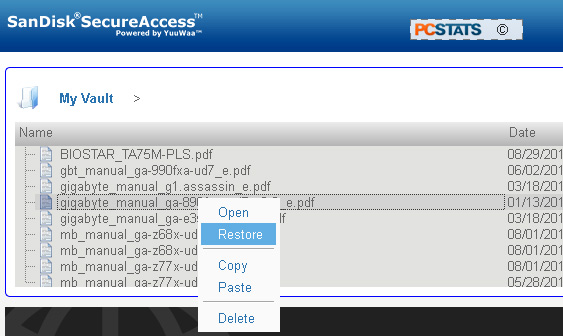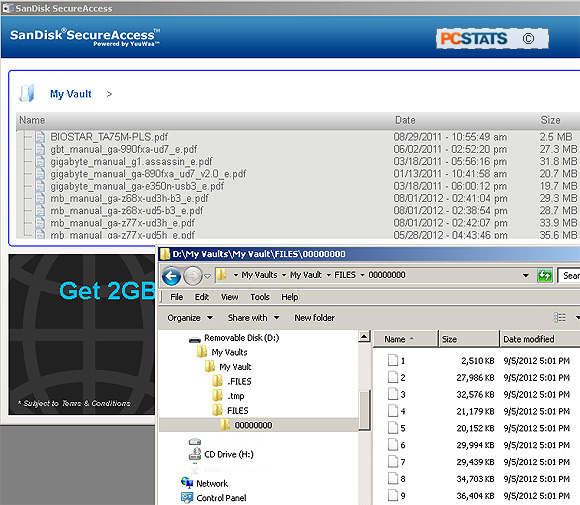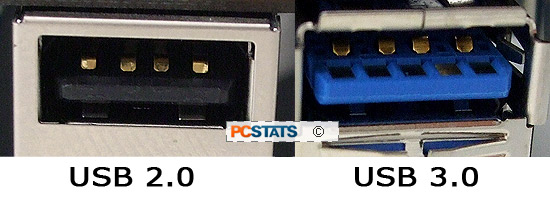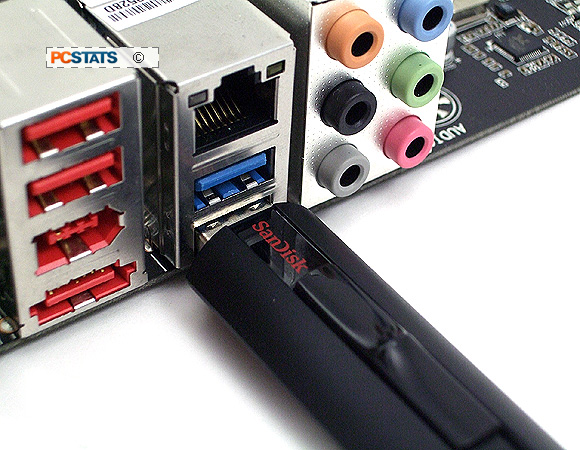
|
What's neat about the Sandisk Extreme 64GB USB 3.0 flash drive is that it's built with the kind of flash memory found in Solid State Drives.
88% Rating: 
|
|
|
|
Home >
Reviews >
Memory >
SanDisk SDCZ80-064G |
|
|
SanDisk SecureAccess and USB 3.0 Primer
SanDisk SecureAccess Software
SanDisk SecureAccess (Yuuwaa Ver 1.1.19755) is a basic data encryption package which can secure files stored on the
SanDisk flash drive with 128-bit encryption. The program basically acts as a secure
folder into which files can be dragged and dropped for encryption and thus secured, the remaining
flash partition is available for sharing.
Access is maintained by running the SecureAccess management software
from the USB 3.0 flash drive and entering a password. Crucially though, everything stored in the encrypted "My Vault" folder
that SecureAccess creates is read only.... to edit a document the file needs to
be moved outside the vault, worked on, then stored back in the vault at the end
of the day. It's somewhat cumbersome.
|

Examining files stored in the 'My Vault'
encrypted folder
|
|

Comparing encrypted files to the raw data in
'My Vault'
|
The files are stored in encrypted format
under a folder labelled "My Vault", which can be accessed by Windows Explorer, but
all file names and extensions are removed. On the whole, PCSTATS did not find the SecureAccess program
all that streamline to use.
 Brief Primer on SuperSpeed USB 3.0 Brief Primer on SuperSpeed USB 3.0
USB 3.0 is the third major revision of the Universal
Serial Bus standard that runs everything from your mouse and keyboard to flash
drives and external hard drive docking stations. It brings with it a couple
benefits in addition to a speed boost, such as Sync-n-go (USB devices are
instantly available), backwards compatibility, bidirectional dual simplex data
transfer protocol and better power efficiency so there's less power usage when
it is active or in an idle power state (no device polling). USB 3.0 ports are
identifiable by their blue colour and nine electrical connector pins.
As
you would expect, USB 3.0 ports and devices are backwards
compatible with USB 2.0 and USB 1.1 standards. However, USB 3.0 devices will
operate at 480Mbit/s when connected to USB 2.0 ports. Conversely, USB 2.0 devices
are limited to USB 2.0 speeds when inserted in a USB 3.0 port. Because of the
back-end technology differences you need both a USB 3.0 port and USB 3.0 device
to get the full 4800Mbit/s speed. 
USB
2.0
and USB 3.0 ports photographed upside down to illustrate the extra electrical connections on the latter. 
The Sandisk Extreme 64GB USB 3.0 memory stick is slim enough to use
with horizontally and vertically stacked USB ports; this is something you'll want to be
mindful of with bulky USB thumb drives, sometimes they block adjacent
USB ports.
Next up, PCSTATS benchmarks the Sandisk Extreme 64GB USB 3.0
thumb drive.
|
